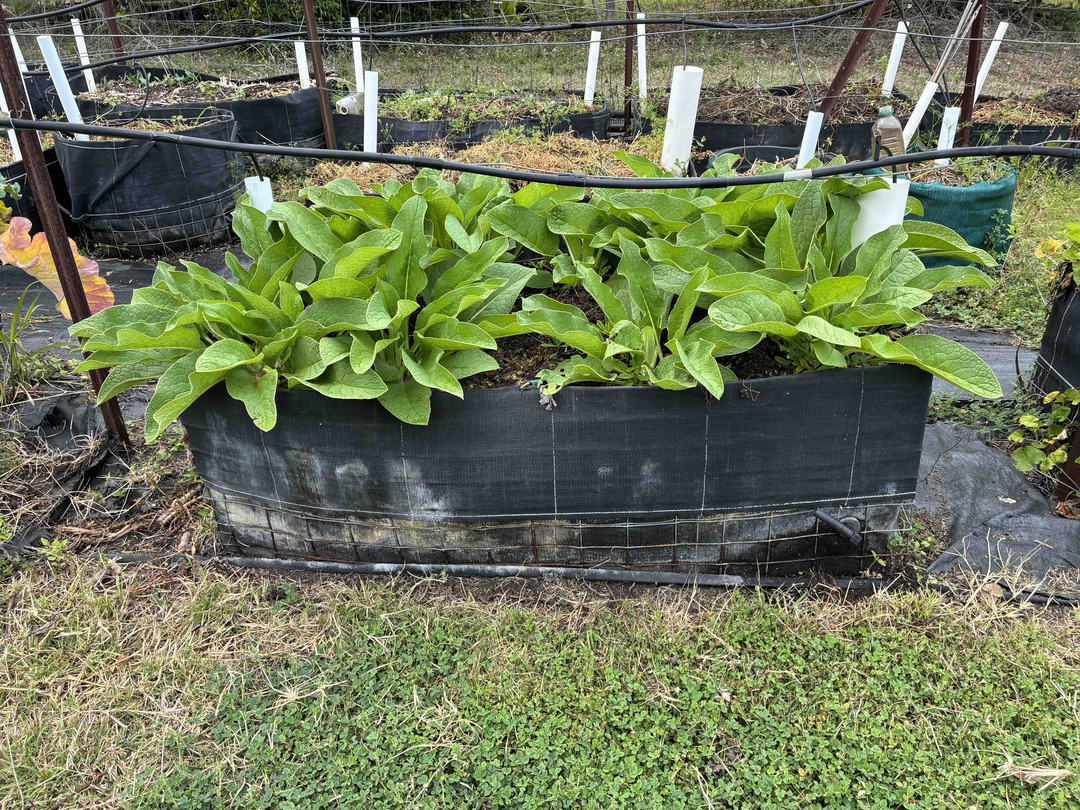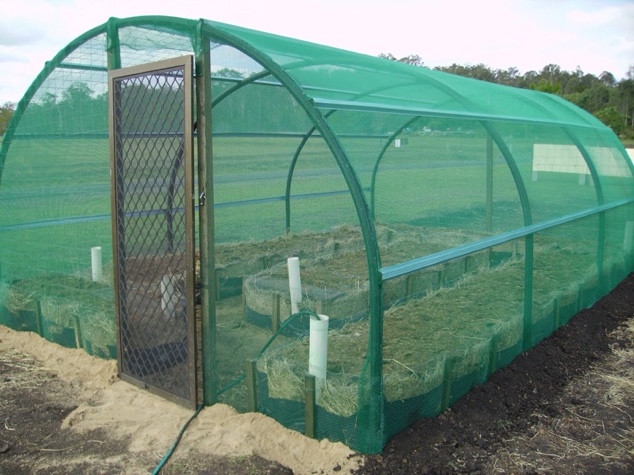Tag: guide
-

Lightweight Wicking Beds from Crab Pot Mesh and Weedmat
Crab Pot Mesh and Weedmat Wicking Beds are cheap, easy to build with simple home tools, and can be made in any shape or size to suit your requirements. Our designs minimise waste of mesh, plastic, and time. Despite their simplicity, they’re exceptionally durable—our beds built in 2010 still show little to no wear in…
-
Step 4 – Applying the BioBooster to Large Areas
The application rate to aim for when applying the BioBooster to large areas is about 100 L per ha. To make that practical, it is diluted into another 1,000-litre pod so that it can be distributed evenly by low pressure overhead irrigation or with existing spraying equipment. Ensure the pod is free of chemicals. Extra…
-
Step 3 – Growing The BioBooster for Large Areas
The starter is multiplied in water with nutrients and lots of air to grow the BioBooster. We used a 1,000-litre pod to grow 900 litres for our field trials, enough for 9 ha. We allow 5-10 cm for the jumpiness of the water. For smaller brews, adjust accordingly. The BioBooster is applied at 100L/ha, which…
-
Step 2 – Growing a Starter for Large Areas
The starter combines local soil biology in a growing medium with foods to multiply the biology. This results in a high-fungal starter to be then massively multiplied in a large volume of water to grow BioBooster. Farmers and graziers will do this to cover large areas. A 1,000-litre BioBooster needs a 40-litre starter and is…
-
Step 4 – Applying the BioBooster to Gardens and Acreage
Once the BioBooster is ready, let it settle for a few minutes before siphoning into the spray equipment with a hose. Use a sieve to make sure larger particles do not clog up the rose. Add sufficient water to make it easy to apply it evenly. It can be sprayed over the plants. Like the…
-
Step 3 – Grow Your Own BioBooster for Gardens and Acreage
The soil biology in the Starter is increased by growing it in water with suitable nutrition and air. Aerated Growing Good soil biology needs oxygen, so strong aeration is essential. Aerobically grown BioBooster smells ‘earthy’, the sweet smell of good moist soil. Anaerobic biology grows when there is very limited or no oxygen and smells…
-
Step 2 – Growing the Starter for Gardens and Acreage
The starter combines the collected local soil biology with some nutrients in a growing medium to multiply the biology. This results in a high-fungal starter, which is then used as inoculum to grow the biology in water with selected nutrition into the BioBooster. The example is for 100 litre BioBooster, enough to treat up to…
-
Introduction to growing your own Soil BioBooster
BioBooster is a very high concentration of soil microbes in water. It is used to revitalise soil biology, where that has been severally reduced by the widespread use of artificial chemicals in agriculture. BioBooster is based on healthy local soil and grown at home or on the property. It can be grown when needed and…
-

Build Your Own Shade House with Poly Pipe and Battens
This six metre by four metre shade houses protects against excessive sun, wind, and pests such as insects and possums. A simple structure can be made using materials that can be purchased at any good hardware store. This design minimises waste and time, with an estimated material cost of $500 as of March 2025. Use…
-

Building Wicking Beds for Schools
Wicking beds are a useful teaching aid and a hands-on way to introduce your students to gardening. The tips in this guide can also be used for home gardens, but this article refers to materials that comply with school regulations. Choosing and Preparing the Site Find a position that gets at least six hours of…
